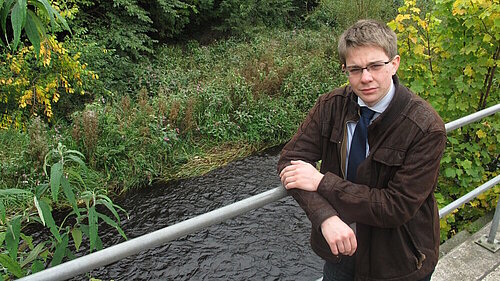Caldwell calls to stop sewage in the Water of Leith

The Water of Leith deserves better.
It’s been a freshwater resource for centuries – ebbing and flowing across Edinburgh, connecting the Pentlands to Colinton, Saughton, Roseburn, Stockbridge, Canonmills, Bonnington and Leith. Our communities were literally built around it and it’s clean, fresh flowing water.
It’s home to over 11 species of fish, thousands of plant species and is absolutely vital to Edinburgh’s local ecosystem, providing a biodiverse habitat for birds, otters and ducks.
So why have we allowed it to fill up with untreated human waste?
There are 65 Combined Sewage Overflow Stations (CSOs) on the Water of Leith, 14 of which are between the Leith Shore and Warriston, a stretch of the river where you can typically find ducks nesting, or people simply enjoying public “green and blue space” as many of us escape from our gardenless flats.
As of January, none of these CSOs currently retain any data of how much sewage they pump out of them when the drains are overwhelmed by harsher weather, which is becoming more and more common due to climate change. However 24 of Scottish Water’s 108 highest priority assets for urgent upgrade across the country are located here. New screens have been fitted on several CSOs in the past few years with varying anecdotal results, but the issue ultimately lies with sewage flowing into our precious river in the first place. But how much?
When the ‘Sewage Scandal’ broke last in 2021, data was published across the UK. Sadly Not in Scotland though. We know Sewage is being dumped in the Water of Leith, but we don’t know the extent. We also know that extreme weather led to a 40% increase of raw sewage dumping across Scotland in 2021.
The data we do have in nearby rivers is concerning. In December 2019, the Newbridge CSO, which is monitored, spilled sewage water into the River Almond 13 times discharging over 2,100 litres of water in one month (source: SEPA FOI).
Lots of volunteer-led organisations are doing fabulous work trying to get more information or trying to help clean it up themselves. SOS Leith and the Water of Leith Conservation Trust both remove tonnes of litter every month from the river and surrounding paths. However, they can’t, nor shouldn’t have to, remove excrement and wet wipes.
Scottish Lib Dem MSP Liam McArthur has been pressing Holyrood Ministers to fix the issues, but locally the new Edinburgh and Lothians Drain Partnership must work with Scottish Water and SEPA (the Scottish Environment Protection Agency) to start by collecting data before we can even begin to seriously tackle the issue.
With several Scottish Government officials quoted saying Scotland is “way behind” England in terms of solving the raw sewage spill problem, our country, city and communities deserve better.
We need to stop taking Edinburgh’s natural environment for granted. The Council recently declared a nature and biodiversity emergency. This is why Lib Dem councillors have tabled a motion at this Thursday’s Council meeting to get a public meeting of the Edinburgh and Lothians Drain Partnership as agencies working together and collecting data is a key and urgent part of ultimately stopping the discharge of human waste into Edinburgh’s longest river. It’s a pity there aren’t more in Holyrood who see the urgency of this issue, but I hope that Councillors can back our plan to move this forward.
This article intitally appeared in the Edinburgh Reporter and North Edinburgh News.